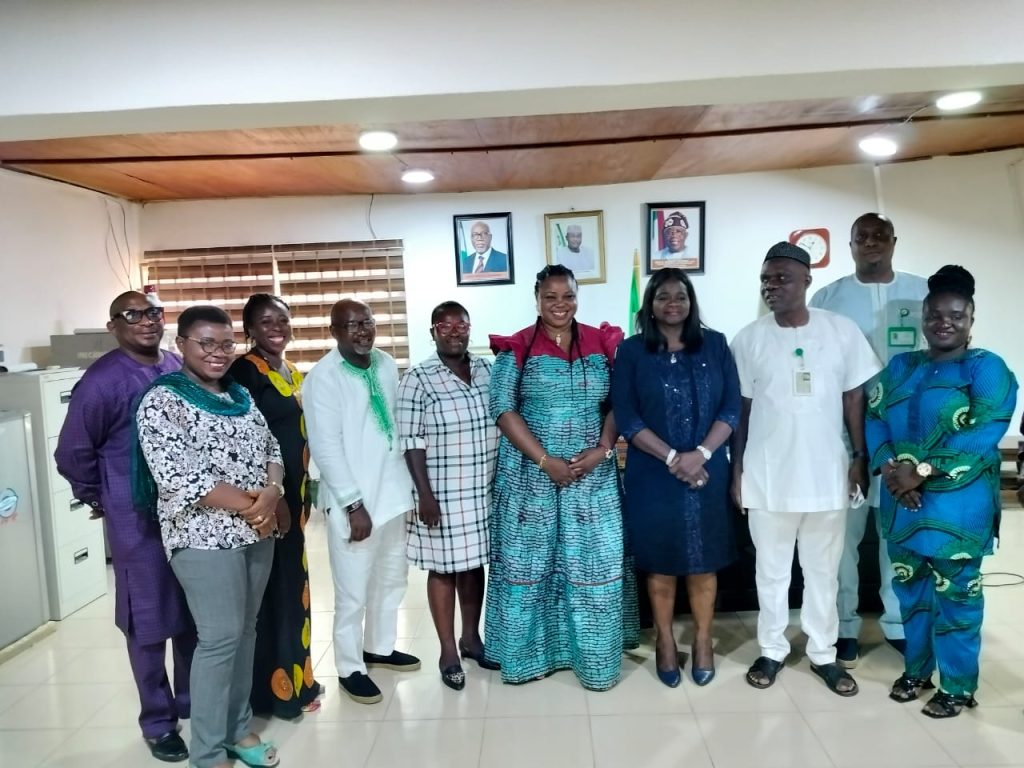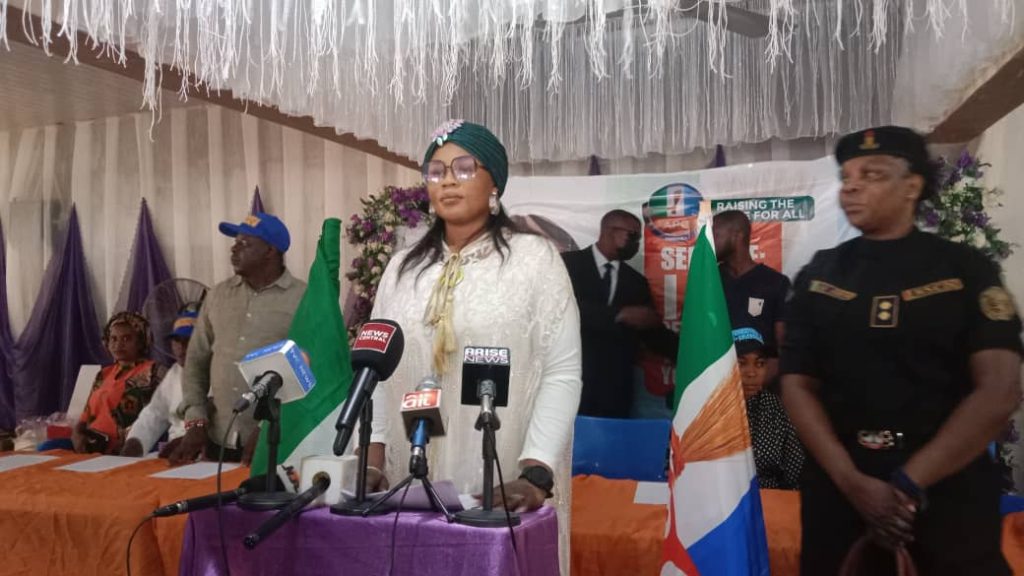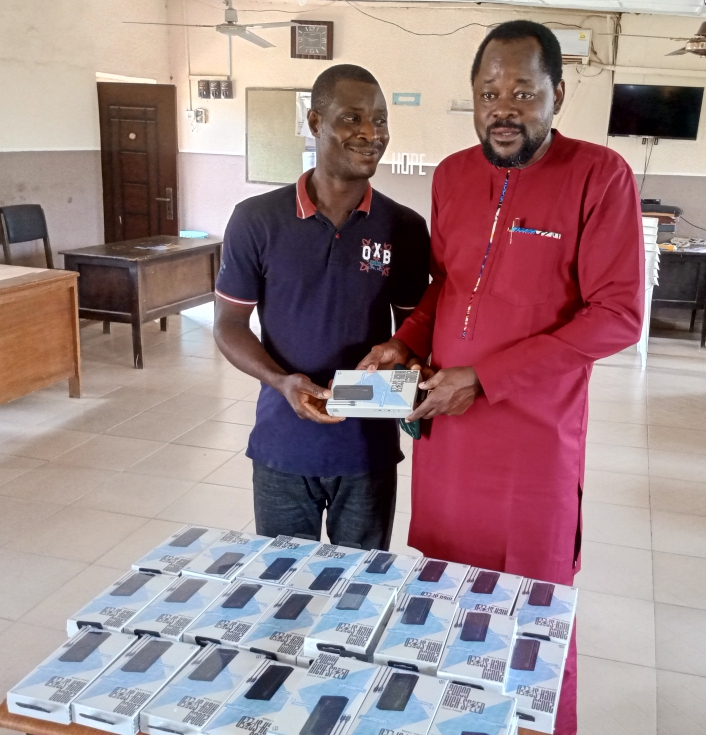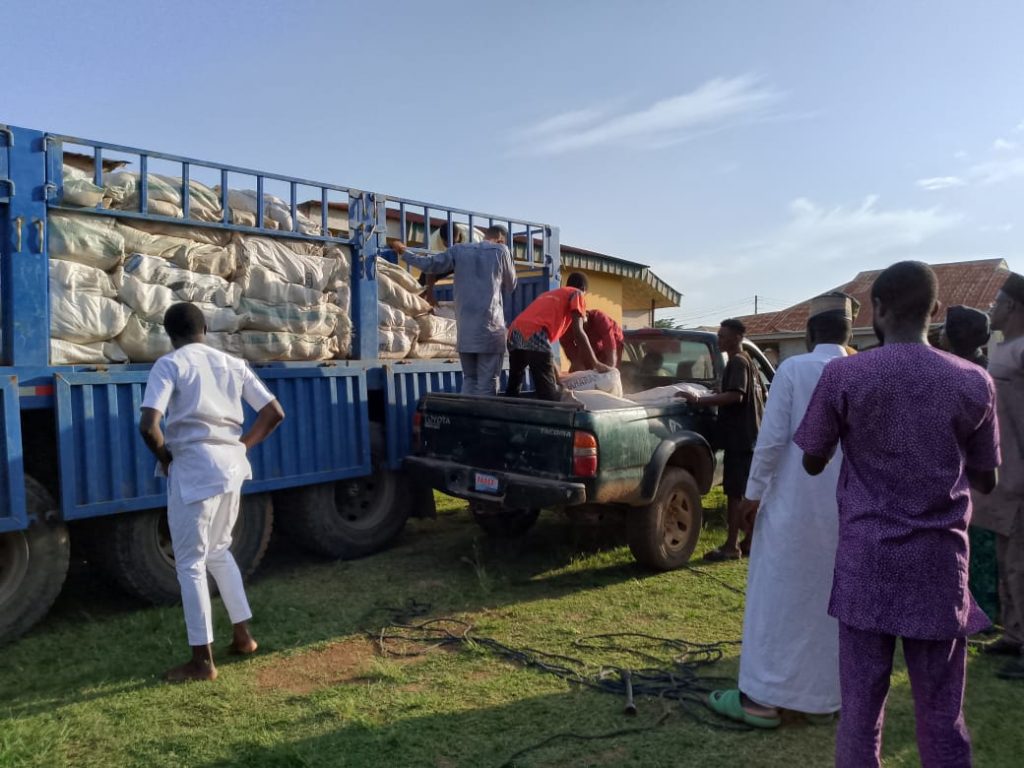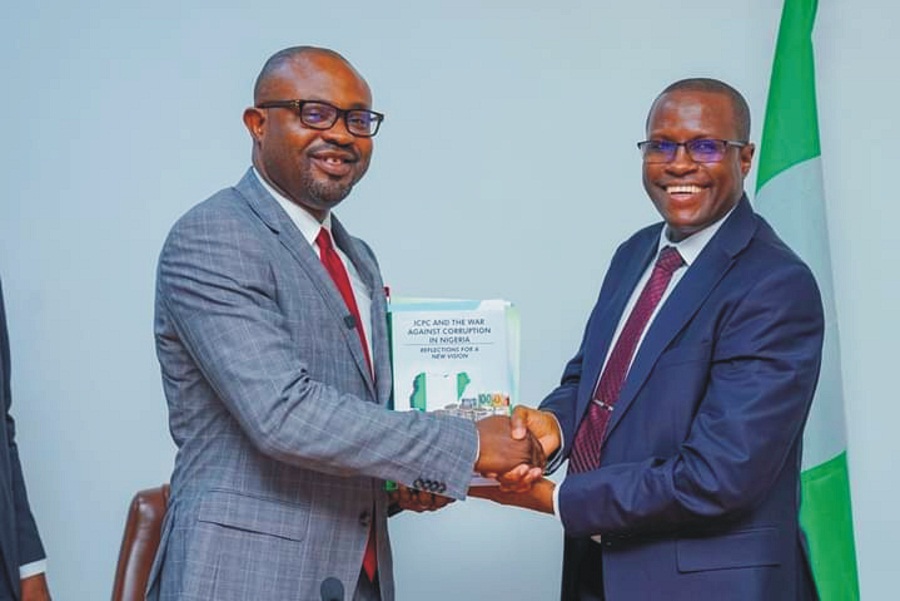Ọ̀wọ̀ and Benin share certain cultural, artistic and possibly political traits
Professor Rowland Abiodun is John C.Newton Professor of Art, the History of Art and Black Studies at Amherst College , Amherst, Massachusetts, USA. He relocated to the United States of America over 30 years ago, and will be 80 on Sunday . He spoke with some reporters about his birthday and on many issues. Ademola Adetula reports.
Why don’t you celebrate birthdays?
Growing up in the 1940s, neither my parents, nor grandparents, nor relatives celebrated birthdays. That does not mean that they didn’t know when they were born. In Ọ̀wọ̀, men celebrated age-grade ceremonies like when they qualified as Ugbàma (young active men who perform important physical tasks like constructing roads, building bridges, etc in the community, also called Ṣẹ̀gbẹ́ in Àkó ceremony) and Èró (seniors between 60 and 65 years of age) in Ọ̀wọ̀ . I believe that a birthday celebration as practiced today among the Yoruba is an influence from outside Yoruba culture. It seems to be aimed mainly at boosting businesses that provide anything from the sale of candles to the cakes that feature prominently in it. The short answer is that the traditional age grade ceremony is more meaningful to me than birthday celebrations.
What do you remember growing up in Ọ̀wọ̀ your hometown?
In the evenings and especially in moonlight, children and adult family members sat outside in groups to listen to parents and elders tell stories (ìtàn) interspersed with songs and (àlọ́) riddles. Most children my age would have listened to as many as several hundred stories in one year. Those sessions trained children not only in the art of sitting still and in concentration but also inculcated in them the cultural values of the society represented by the content of those verbal arts and the communal activities of storytelling, singing, riddling and listening.
As an Art Historian you have written a lot on Owo. Owo and Benin people share many cultural values. How do you explain their relationship?
Because the ancient Yoruba city of Ọ̀wọ̀ is located approximately midway between Ilé-Ifẹ̀ (the cradle of Yoruba civilization) and the powerful Benin Kingdom, the logical reaction is to assume that Ọ̀wọ̀’s position makes her highly vulnerable. But in reality, Ọ̀wọ̀ not only survived but managed to carve out and sustain a sizable kingdom of her own in pre-colonial days. Ọ̀wọ̀’s sphere of influence included many settlements, and her territory has been defined by southern boundaries at the confluence of the Ọ̀gbẹ̀sẹ̀ and Ọ̀sẹ́ rivers, its western boundaries at the southern border of Ekitiland, its northern boundaries at the border of Kabba province, and its eastern boundaries at the western border of the Benin kingdom, an area of well over 2000 square miles.
With strange assumptions and theories, colonial administrators and scholars have projected a weak and heavily “Beninized” image of the Ọ̀wọ̀ kingdom. For example, there’s a claim that the Ọ̀wọ̀ people learned all their arts and customs from the court of Benin. To support this claim, it is often cited that the sixteenth Ọlọ́wọ̀, Ọ̀ṣọ́gboyè, was sent to Benin as a crown prince by his father to learn court art and customs, and bring them back to Ọ̀wọ̀. These claims along with similarities in chieftaincy titles and regalia have been cited as evidence that Ọ̀wọ̀, was for periods of time, under the suzerainty of the Obas of Benin. These assumptions often ignore the fairly complex cultural and diplomatic histories of the Yoruba from whom the Ọ̀wọ̀ people may have derived their military and survival strategies.
According to the late Ọjọmọ Adédàmọ́lá, Arúlíwọ̀ II of Ìjẹ̀bú-Ọ̀wọ̀, Ọ̀wọ̀ people employed àṣẹ alágẹmọ (the life-force or power of the chameleon) a strategy which not only protects the chameleon against enemies, but enriches its wardrobe by appropriating “the dress” of other creatures in its environment. Similarly, he pointed out, the Ọlọ́wọ̀ appropriated certain Benin titles, chieftaincy paraphernalia and other objects which served magically as neutralizers, strengthening him and protecting the city against the menace of the Benin kingdom. Moreover, as Paula Ben-Amos Girshick, a notable Benin scholar, has pointed out, title correspondences are more complicated than a simple one-way borrowing. A number of Benin titles are derived from Yoruba. It is possible that some of these came from Ọ̀wọ̀, and that some Ọ̀wọ̀ titles came from Benin, and that both Ọ̀wọ̀ and Benin titles were derived from other sources.
William Fagg, a foremost scholar of African art, also noted that Ọ̀wọ̀ ivories long misattributed, actually provide a striking example of how it is possible for such a place (as Ọ̀wọ̀) to escape notice. Some hundreds of ivories since known to be of Ọ̀wọ̀ origin were in the western world (some probably have been there for two or three centuries) but none was identified, most (since 1897) being treated as Benin work.
A prominent scholar of Ọ̀wọ̀ history, Oládipọ̀ Olúgbádéhàn, whose extensive research and ethnographic data on Ọ̀wọ̀’s political history in pre-colonial times is unmatched, also affirms that it was an error for the British administration to place Ọ̀wọ̀ under the jurisdiction of Captain Reginald Durie, the District Commissioner in 1897. Obviously impressed by the military might of Benin, the British found it difficult to understand how Ọ̀wọ̀, apparently the most vulnerable Yoruba kingdom, and physically the closest one to Benin could have escaped Benin domination which extended beyond Ọ̀wọ̀ and its diplomatic presence palpably felt in faraway Àkúrẹ́ and many Èkìtì towns. It is, therefore, totally conceivable that Ọ̀wọ̀ could have been politically independent without compromising its sovereignty.
Being on good terms with Ọ̀wọ̀ was vital to Benin’s economy and trade with the hinterland, because Ọ̀wọ̀ was the gateway to western and northern Yorubaland. It could not have been in the interest of Benin to alienate Ọ̀wọ̀. As Benin trade and political ambition increased, the incessant threats against Ọ̀wọ̀ must have increased as well. From available evidence, however, Ọ̀wọ̀ not only seemed to have been capable of repelling such attacks, but it expanded its domain and enjoyed considerable affluence. And, according to Afọlábí Òjó, an acclaimed cultural geographer, Ọ̀wọ̀ royal palace, extending more than 108.5 acres, was “by far the largest palace in Yorubaland,” more than twice the size of the next largest palace at Iléṣà which covered 51 acres.
It is also believed that Owo people migrated from Ile- Ife. Can you comment on this belief?
The history of the present dynasty of the Ọ̀wọ̀ kingdom almost certainly has its roots in Ile-Ife, belonging among the many waves of migration from that city starting from about the 12th century. It also seems reasonable to suggest that both Ọ̀wọ̀ and Benin shared certain cultural, artistic, and possibly political traits in some distant past, given their common historical relationship with Ilé-Ifẹ̀. However, the different and changing socio-political, linguistic and geographical realities of the areas settled by Ọ̀wọ̀ and Benin must have forced both kingdoms to develop independently, each choosing and reconstituting elements that best suited their growth and stability.
Most importantly, if a good majority of the terracotta works excavated from Ugbó’Lajá in Ọ̀wọ̀ were to be accidentally mixed with those from Ife, it would be extremely difficult to determine which came from either town. The implications of such cultural consanguinity assert that the people of Ọ̀wọ̀ are from Ifẹ̀. Professor Ekpo Eyo’s excavations in the 70s thus provide an archaeological confirmation of the great antiquity of the Ife- Ọ̀wọ̀ cultural and artistic relationships.
There is a myth that Odùdúwà descended by chain from Ọ̀run (the otherworld) to found Ilé-Ifẹ̀. How do you explain this?
Myths usually involve the exploits of gods and heroes. Myths do not have to be scientifically proved. In the case of Odùduwà descending by chain from Ọ̀run (the other world), the myth supports the visible institution of the founding of Ifẹ̀ where it is believed that the world began. Most civilizations are grounded on myth. Usually, these myths are kept alive through sacred/secular rites in which artists play important roles. For example, in the United States, there is “Groundhog Day” which is celebrated on February 2nd every year in winter. On this day, it is believed that if the groundhog sees its shadow on a bright and clear day, there will be six more weeks of winter ahead.
You spent about two decades of your academic career in Ilé Ifẹ̀. What times would you consider memorable?
Cultivating relationships with older people, a central skill in traditional Yorùbá education known as “bá àwọn àgbà rìn” (“walking with the elders”) I was fortunate to enjoy the mentorship of such embodiments of Ifẹ̀ culture, thought and spiritual practices as Chief M. A. Fábùnmi, the Ọdọlé Atóbaṣe of Ifẹ̀, Chief M. O. Fáṣọgbọ́n, the Lóodokò Àdìmúlà of Ifẹ̀, and Mr. J. L. Adéníran, a highly respected Ifẹ̀ indigene and authority on comparative linguistics.
Chief M. O. Fáṣọgbọ́n was the chairman of the Ifẹ̀ Cultural Association of Historical Monuments, and in 1985, published an important work, The Ancient Constitutional History of Ilé-Ifẹ̀ Ooyelaagbo. Chief M. A. Fábùnmi, an Honorary Research Associate, Institute of African Studies, University of Ifẹ̀ (where I was Research Fellow), possessed an encyclopedic knowledge of all the shrines at Ifẹ̀, and in 1969 he too had written an illustrated monograph, Ifẹ̀ Shrines. Mr. J. L. Adéníran was not only a master of the Ifẹ̀ dialect but was also a gifted linguist whose ability to demonstrate the interconnectivity between Ifẹ̀ and other Yorùbá dialects was unmatched. My interaction and learning sessions with all of these mentors continued through all my years at Ilé-Ifẹ̀.
I also learned much from my colleague, Dr. Ọmọ́tọ́ṣọ̀ Elúyẹmí, the Apènà of Ilé-Ifẹ̀, an archaeologist and very knowledgeable Ifẹ̀ historian who invited me to see most of his excavations in and around Ifẹ̀. Our intellectual pursuits were related and when in 1978, he wrote The Living Arts and Crafts of Ilé-Ifẹ̀, I was asked to write the preface to it.
In the 1970s, the British archaeologist, Peter Garlake joined the Institute of African Studies at the University of Ifẹ̀. Not only did I visit his excavations at Ọbalárá’s land in Ifẹ̀ but we also had long and extensive conversations on the interpretation of his finds. This is acknowledged in his book, Early Art and Architecture of Africa where he writes that “Rowland Abiodun’s insights into Yorùbá values and aesthetics can be used to reveal much of the art of ancient Ifẹ̀.”
How does the Western world accept our art works?
Not too long ago, many collectors, dealers or so-called African art enthusiasts believed that once they are in possession of a piece of African art, the only meaning it can have is the one they give to it. Roy Sieber, a foremost African art scholar rightly describes this attitude as “admiration in isolation,” which he affirms “easily leads to misunderstanding, and African art vaguely understood, has fallen to the taste of the twentieth century.” As if to illustrate Sieber’s point, a 1997 New York Times art reviewer of a Yoruba art exhibition, Grace Glueck, wrote that: “Charming as it is, Yoruba art which is not, by the way the work that influenced the French modernists early in this century, seems to me [that is, the reviewer] more provincial, with less aesthetic claim, than the highly sophisticated creations of some other African cultures.”
First, judging Yoruba art works by their influence or lack thereof on French modernist art is decidedly Eurocentric. The reviewer adopts a highly subjective account which is misleading in its implications regarding the aesthetic notions and intentions of the Yoruba people and arrogant in its disregard for their point of view.
Second, the reviewer goes to great lengths to represent African in the “primitive” and “exotic” milieu in which she would want her readers to define and judge Yoruba art. In other words, this 1997 New York Times review of Yoruba art not only has a lot in common with a book such as the Primitive Negro Sculpture of 1926 by Paul Guillaume and Thomas Munro, but it is inexcusable because it ignores the many volumes of exciting scholarly research work published on African art since the first quarter of the 20th century.
You have co-authored African art books with colleagues who are not Africans. Can you comment briefly on these books and your collaborators?
I have collaborated with Professors John Pemberton III and Henry John Drewal on three important projects which have resulted in the publication of Yoruba: Nine Centuries of African Art and Thought; Yoruba Art and Aesthetics; and The Yoruba Artist: New Theoretical Perspectives on African Art. I have known them for about fifty years, seen how they do research in the field, and admired their ability to let the Yoruba culture speak for itself. In this instance, we can apply the Yoruba saying, “Bí ewé bá pẹ́ lára ọṣẹ, á dọṣẹ (If a leaf remains long enough around soap, it becomes part of the soap). In my opinion, these colleagues, in addition to respecting the role of language in their research, do possess the right combination of character traits – ìfarabalẹ̀ (composure, calmness, imperturbability) , ojú-inú (literally, “inner eye” or insight), and ìlutí (good hearing, teachableness, obedience and understanding) all of which have prepared them adequately to study and understand Yoruba art.
Let me state emphatically that it would be a misrepresentation of my position to suggest that you have to be Yoruba by birth to understand Yoruba art. That would be as absurd as saying that you have to be born in Italy to understand Michelangelo. I argue that it is fundamentally important for a scholar of African art – whether born in Ile-Ife or London – to learn the language and be prepared to immerse him/herself in the African culture that they are researching for their work to be credible.
How would you want to be remembered?
As evident in my 2014 book, Yoruba Art and Language: Seeking the African in African art, I’d like to be remembered for helping to ensure the survival and essential role of African artistic and aesthetic concepts in the study of art in Africa.


